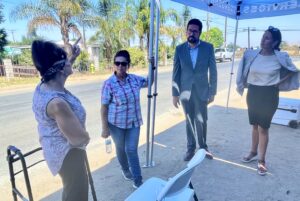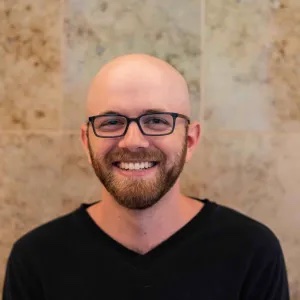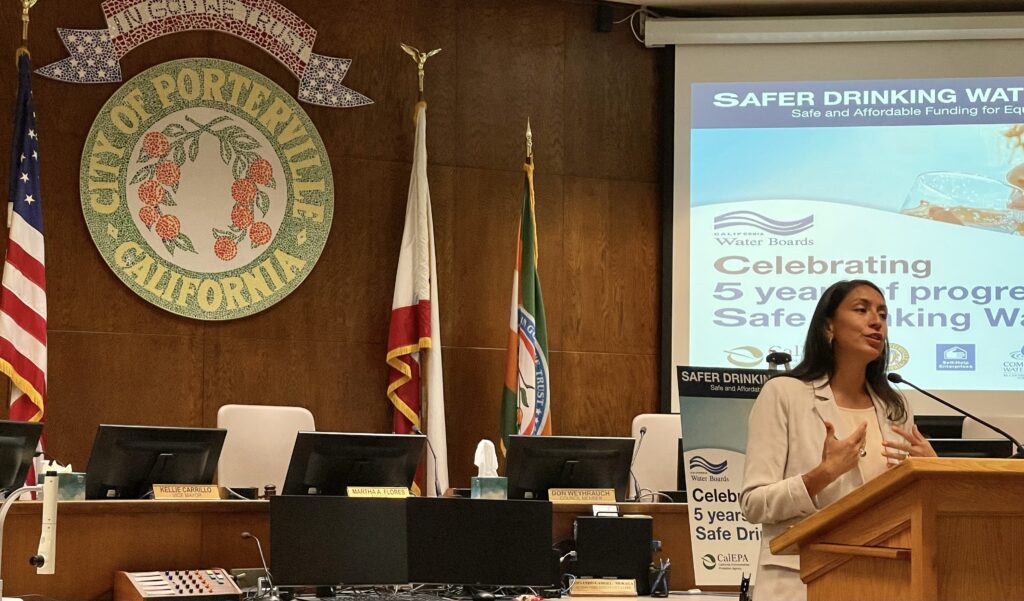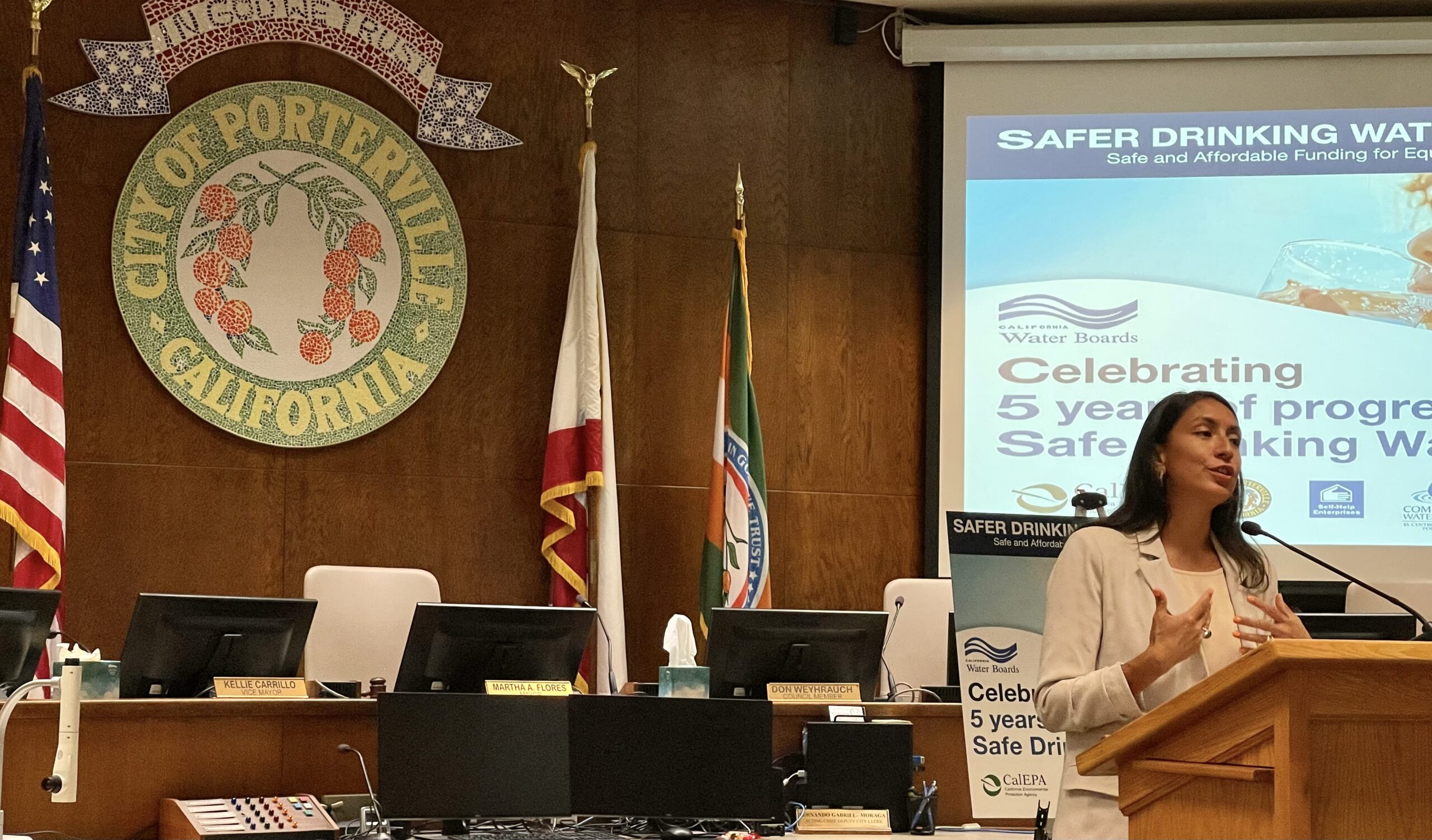State officials, advocates and residents gathered in Porterville on Monday to celebrate the five-year mark of a state drinking water program born of the crippling 2012-2016 drought.
That’s when the entire community of east Porterville went dry – for months. There was no government program available to help and nonprofits could only do so much. Residents relied on the charity of neighbors and, sometimes, complete strangers who read about the disaster and brought water in by the truckload.
The plight of east Porterville and other, mostly unincorporated, San Joaquin Valley communities shone a light on the precarious state of drinking water for hundreds of thousands of Californians.
As a result, the Safe and Affordable Funding for Equity and Resilience (SAFER) program to help fund drinking water solutions was passed in 2019. The fund receives $130 million a year from cap-and-trade emissions credits sales. To date, it has received $600 million and is expected to continue until 2030. Combined with other grants, the state has doled out more than $830 million through SAFER, cutting the number of residents served by failing systems from 1.6 million to 700,000, according to a state press release.
That money funds projects that bring safe drinking water to communities throughout the state. In the valley, it has funded a range of projects such as, treatment systems for contaminants, new wells, infrastructure replacement and construction to hook up small communities to larger urban water systems.
The celebration was held in Porterville in Tulare County, once the poster child of drinking water disasters. During the 2012-2016 drought, about 1,000 private wells serving homes in unincorporated east Porterville went dry, plunging the community into a drinking water crisis. Other small community wells in Porterville have also collapsed and gone dry since then.
Through the SAFER program, 900 east Porterville homes, of 1,400, have been consolidated into the City of Porterville’s much larger, more reliable drinking water system. SAFER has also funded multiple projects throughout the city including other consolidations, well construction and waterline fixes.
“We are in a summer that is unprecedentedly hot. We will continue to see this,” said Yana Garcia, California’s Secretary for Environmental Protection, at the event. “We will continue to experience droughts and floods that call into question the way that we think about our infrastructure dollars and our infrastructure funding and the needs of communities.”
Advocates from nonprofits Community Water Center, Leadership Counsel for Justice and Accountability and Self-Help Enterprises also spoke at the event. All three organizations have partnered with the state to help bring SAFER projects to communities in need. Advocates said that despite successes through the program, there is still a constant need for more solutions.
“The work is not finished,” said Susana De Anda, executive director of Community Water Center. “As we solve this issue we need to work alongside the impacted residents to get it right because if we don’t we’re going to fail once again.”
After the speakers were finished, the group took a bus tour of five SAFER projects around Porterville.

They stopped to hear from residents and former volunteer board members of Central Mutual Water Company, one of the small water systems that was consolidated with the city system. The state Water Resources Control Board used $1.2 million in SAFER funding to complete the project in 2023. Additional wells are still being built to expand the city’s capacity.
Board members with Central Mutual had been considering consolidation and putting an end to their company because the infrastructure, built in the 1940s, was becoming difficult to maintain.
The straw that broke the camel’s back came in 2016 when the company’s well ran dry.
“Our well went down for a week,” said Paulette Carpenter, former board member of Central Mutual.
There are 79 fully completed SAFER funded projects in the San Joaquin Valley ranging from technical assistance for mutual water companies to consolidations.
There are 267 ongoing projects in the valley. Those include contaminant mitigation, consolidations, new wells, new pipelines, new water meters and more.
The state Water Board was unable to provide funding numbers for those projects in time to include in this article.
Share this:
- Click to share on Facebook (Opens in new window)
- Click to share on Twitter (Opens in new window)
- Click to share on LinkedIn (Opens in new window)
- Click to share on Reddit (Opens in new window)
- Click to share on Tumblr (Opens in new window)
- Click to share on Pinterest (Opens in new window)
- Click to share on Pocket (Opens in new window)
- Click to share on Telegram (Opens in new window)
- Click to share on WhatsApp (Opens in new window)
- Click to print (Opens in new window)









You must be logged in to post a comment.